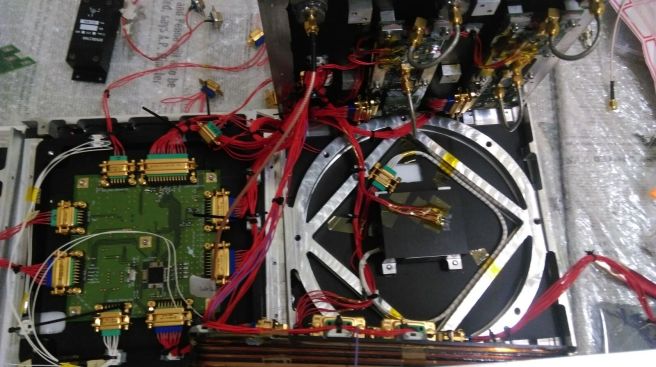Continued from Looking back: Connecting the dots (Part 1)
August 2014
A meeting of the Educational Outreach department of NSS was scheduled. For some reason, I (Activity Associate or AA back then) reached late for that meeting. In that meeting, NGOs were to be assigned to AAs. I wanted to be the AA for Asha NGO, where I’d spent the latter half of my time as a volunteer. To my disappointment, it had already been allotted to another AA. My department head told me that all the existing NGOs in collaboration with NSS had been assigned. I should have come on time if I wanted to be assigned to one of them. However, they had heard that a new NGO had come up in the Chaitanya Nagar area near the campus. I was asked to go and talk to them and see if any collaboration was possible.
Dejected, I went there. I realised that it was the head office of Vidya NGO. We were already in collaboration with their Phulenagar centre. At the head office, I realized that they had 6 additional centres around the campus, and they were happy to partner with us for all the 6 of them. Going to the head office, also introduced me to their prominent staff members. One of them, Shalini Swaminathan ma’am, as I’ve explained in The Making of OLI – NSS, IITB, played a prominent role in laying down the seeds for OLI.
After OLI was conceptualized, after it was brought into existence, after it surpassed all our expectations, after it reached lakhs of beneficiaries, after MHRD approached us to partner with them, I often wondered why the idea of starting something similar did not occur to anyone in batches before mine. Extremely smart students from all parts of India, speaking different languages and all enthusiastic about sharing their knowledge have been present in the campus since a long time. Diversity is a powerful resource, with a lot of potential. And it was lying there in the campus, waiting to be harnessed. Perhaps they are right when they say that necessity is the mother of invention. Even with necessity knocking on NSS’ doors (when we were asked by NGO Vidya to help them with regional language educational videos), it took months for us to realize that there is no credible video source on the internet but however, we have all the resources to make our own videos. When I look at things this way, I often wonder how many resources with a huge potential would be surrounding me and I am not aware of their potential because the right necessity is yet to confront me. Looking back, I feel very happy that I was late for that particular meeting of NSS. Today, perhaps, OLI exists because of that.
November 2015
If I was asked to specify one period which changed me most dramatically, I would speak about the Bangalore trip of November ’15, the sudden, almost unplanned trip that we undertook for performing the environmental tests of the Qualification Model of Pratham. I’ve already written two blog posts describing my experiences of the trip: IITB Diaries: 20 seconds of insane courage and A 40 Hour Adventure – Pratham’s Thermo-vacuum Test. This trip gave made me very very clear in my head about my priorities, about what really matters and what doesn’t. It gave me a glimpse of my pressure-bearing capabilities and gave me stories I’ll tell my grandchildren. This trip made me realize that a satellite tests not only the technical prowess of people building it but almost every thing that defines an individual. It tested our will-power, our tenacity, our character, our team-bonding, our grit, our determination, and what not. Ratnesh (our Project Manager) said something very profound later on:
“We thought that we were building Pratham. In reality, all along, Pratham was building us”.
I don’t think I need to say more except that the person who came back from Bangalore was markedly different from the person who went there.

2005-10
I participated in close to 15 elocution/recitation competitions in school, in all three languages (English, Hindi, Marathi). Never won the first prize in any competition. I somehow managed to get 2nd/ 3rd prize in most of the competitions. After every competition I had this feeling of missing out just by a small margin. And so I applied to participate in the next competition which came up, preparing harder this time. The first prize kept eluding me and I kept participating in more and more competitions, and kept improving. First, my stage fright got rooted out, then I started searching for content that would capture and increase attention span of the audience, then I started creating original content. Yet, the first prize never found me. In every competition, there would be someone who did better. For good reason perhaps.
The learnings I got from every failure made me better at public-speaking and drastically improved my presentation skills. Who knows, had I gotten the first prize at any time, I might have stopped trying to get better! All my presentation, content-creation and public-speaking skills came to my rescue during various important presentations and speeches of my insti days: NSS and Satellite Team Orientation, NSS Felicitation, Institute Valedictory Function speech etc. The content creation skills are also helping this blog I guess. It feels great when someone says they remember that particular speech/ presentation even months later. It feels great when someone complements the blog posts, appreciates them. I guess it was for good that the first prize kept eluding me during the school days.


Awesome writing Yash,
It was a pleasure knowing you as a student. Your temperament, behaviour and attitude are admirable and worth emulating.
LikeLiked by 1 person